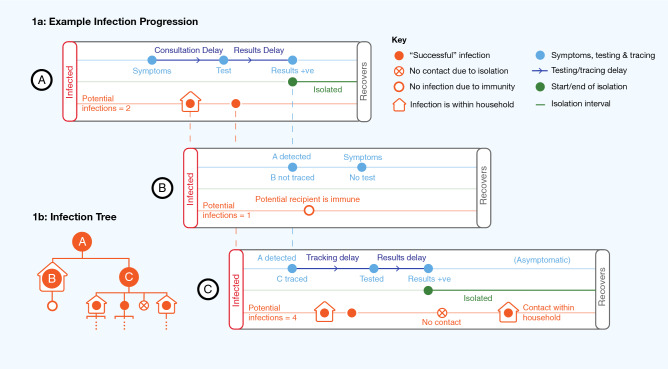Figure 1.
Visual representation of the theoretical model. An initial infection A potentially infects two other individuals, called B and C. (a) A successfully infects B and C. A gets tested upon experiencing symptoms, and isolates upon receiving a positive test result. This begins a process of contact tracing, through which C (but not B) is tested. B does not infect anyone else; the only person they potentially infect is immune. C infects two other people before being isolated. Once C is isolated, she does not come into contact with a potential infection outside the household, but still infects an individual in the same household. Individuals in the model may or may not be symptomatic, get tested, be contact traced, and they may isolate for a variety of reasons. (b) The infection tree summarises the “branching process” in the model, i.e. the first and second generation potential infections caused by A.

